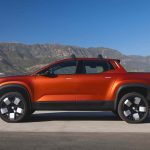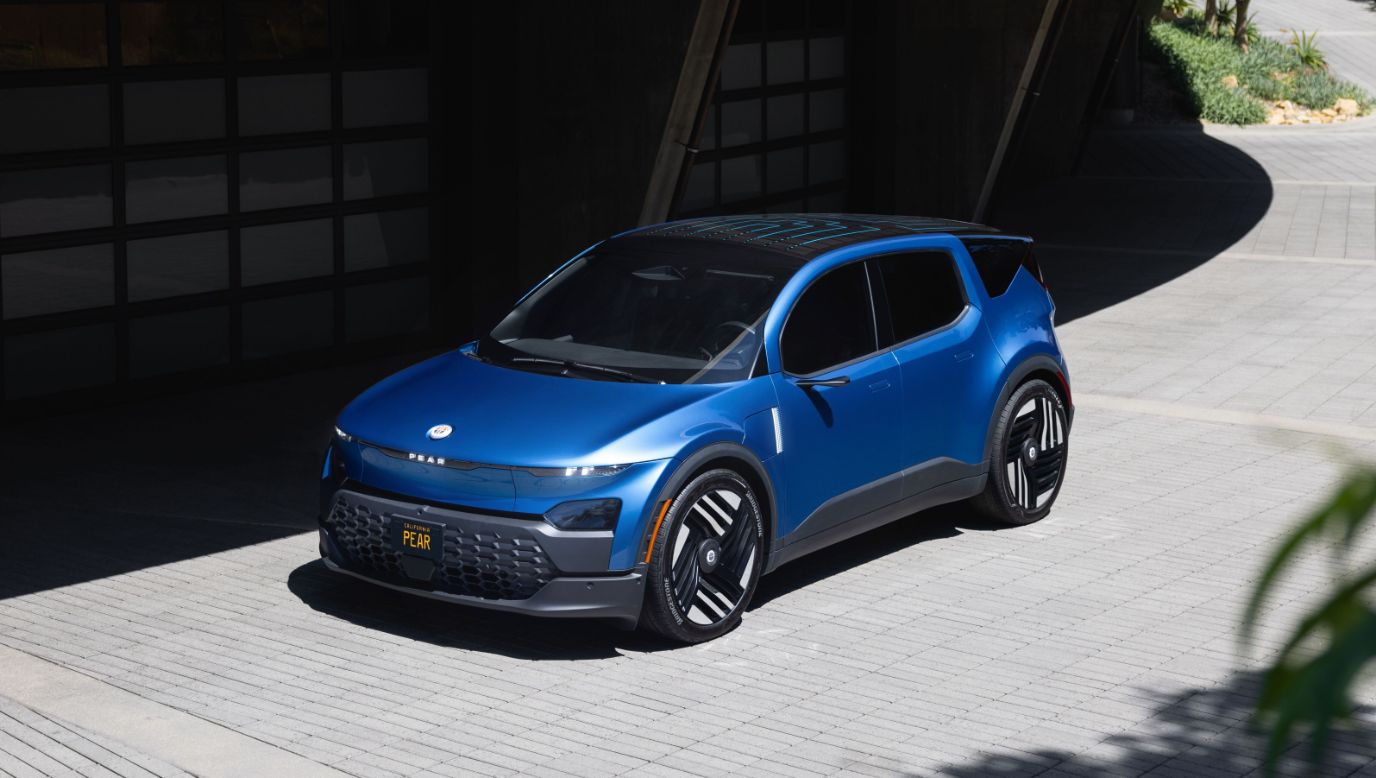In the wake of its recent grand unveiling of three cutting-edge electric vehicles, Fisker has provided additional insights and visuals of its upcoming Alaska electric truck. The revelation took place during the Fisker Product Vision Day event a fortnight ago, where the brand’s Pear electric hatchback and the Ronin super GT also took the spotlight. The Alaska truck, anticipated to debut in the first quarter of 2025, will utilize a modified Ocean platform known as the FM31, boasting an impressive projected range of up to 340 miles.
At the high-profile event, Henrik Fisker, the CEO of the company, boldly proclaimed that the Alaska would stand as the world’s most sustainable electric truck, and uniquely, the lightest in its category. Building upon its environmentally conscious ethos, Fisker’s Ocean model already flaunts a vegan interior, featuring ethically sourced materials for its upholstery, carpets, and interior panels. The upcoming Alaska model aims to further elevate the brand’s commitment to sustainability, building upon the innovations witnessed in the Ocean.
A notable highlight shared with the Pear model is the ingenious “Houdini trunk.” In the context of the Alaska electric truck, this refers to a mid-gate that can be electronically lowered, seamlessly disappearing under the truck’s floor. With this mid-gate deployed and the rear seats folded flat, Fisker asserts that the truck’s bed length can be extended from a standard 4.5 feet to an impressive 9.2 feet.
The lowered mid-gate is designed to provide protection to the rear seats through fold-up panels, as per the company’s specifications. Quirky yet functional additions to the truck’s design include a “big gulp cupholder,” as showcased in the newly released images, as well as a unique cowboy hat holder—a roof-mounted strap designed to secure a cowboy hat. Additionally, a retractable tablet holder for the co-driver’s convenience has been integrated into the design.
Fisker’s plans for the Alaska truck involve offering customers a choice between two battery capacities: 75 and 113 kilowatt hours. Preliminary estimations suggest that the former could provide a range of around 230 miles, while the latter, with its larger capacity, has the potential to achieve up to 340 miles on a single charge. It’s important to note that these figures are subject to revision as more testing is conducted. For comparison, the range-topping Ocean Extreme model boasts a remarkable WLTP range of 440 miles. However, the specifics of the powertrain remain to be officially confirmed.
Drawing a parallel with the Ocean Extreme, the Alaska is likely to feature a dual-motor all-wheel-drive system. The Ocean Extreme delivers a substantial 550 horsepower, and while precise figures for the Alaska are yet to be disclosed, it is anticipated to fall within a comparable range. Fisker’s provided acceleration data indicates that the Alaska will accelerate from 0 to 60 miles per hour in a range of 3.9 to 7.2 seconds, dependent on the chosen variant and configuration.
While Fisker has confirmed that the manufacturing of the Alaska will take place in the United States, the specific location and potential collaborators remain undisclosed, as they are still in the process of finalization.
Positioned between the compact and mid-size truck segments, the Alaska is expected to carry a starting price of approximately $45,400, before accounting for any incentives. As of now, reservations for the truck are open, requiring a deposit of $250.
In the realm of electric trucks, such as the Ford F-150 Lightning, Rivian R1T, Hummer EV, and the forthcoming Chevrolet Silverado EV, the Alaska presents a more accessible price point. It is poised to compete directly with future contenders in this burgeoning market.
Recent reports indicate that major players in the automotive industry, including Ford and General Motors, are actively developing their next-generation trucks, with a potential focus on affordability and enhanced range. Rivian, too, is advancing its R2 platform and has confirmed plans for the R2S mid-size SUV, although the status of the R2T remains unconfirmed.
Fisker’s Product Vision Day event also showcased the Pear small electric hatchback, the Ronin electric grand tourer, the Force E adventure package for the Ocean, and an innovative new supercomputer. While the manufacturing of the Pear is expected to take place in the US, specifically at Foxconn’s Lordstown Motors plant in Ohio, the finalization of this arrangement is pending.






























